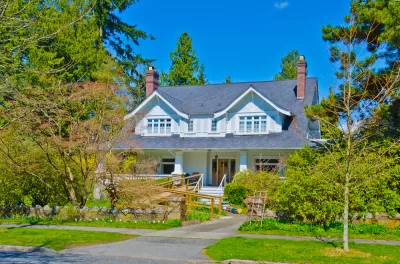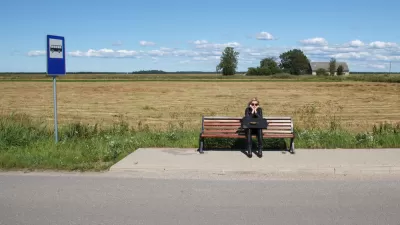Changing demographics and preferences in eldercare have millions planning to age in place, this will have big implications for our communities and our policy makers.

A new report from the Harvard Joint Center for Housing Studies shows the changing state of America's aging community, both in terms of demographics and where people intend to age. "By 2035, one in three U.S. households, versus today’s one in five, will be headed by someone 65 or older," according to reporting from Mimi Kirk in CityLab. To add to that demographic reality, "By 2035, the number of households with a person with a disability will reach more than 31 million—an increase of 76 percent over current numbers," Kirk writes. But, while it may be easy to make these plans, it's harder to execute them: "… only 1 percent of housing stock is currently equipped with no-step entrances, single-floor living, wide halls and doorways to allow a wheelchair, electrical controls reachable from a wheelchair, and lever-style handles on faucets and doors," Kirk writes.
The lead author of the report, Jennifer Molinsky says issues don't stop at outfitting the home for possible impairment, “Even though many people express a desire to age in place, doing so can be isolating without ways to connect with the surrounding community,” Molinsky says. This is a tricky issue, but Molinsky says living in walkable areas may help dispel the isolation. "Constructing new housing in more central areas, such as in downtown suburban centers, could also help with isolation," Molinsky told Kirk.
FULL STORY: Can America’s Aging Stay in Their Homes?

Planetizen Federal Action Tracker
A weekly monitor of how Trump’s orders and actions are impacting planners and planning in America.

Congressman Proposes Bill to Rename DC Metro “Trump Train”
The Make Autorail Great Again Act would withhold federal funding to the system until the Washington Metropolitan Area Transit Authority (WMATA), rebrands as the Washington Metropolitan Authority for Greater Access (WMAGA).

The Simple Legislative Tool Transforming Vacant Downtowns
In California, Michigan and Georgia, an easy win is bringing dollars — and delight — back to city centers.

Supporting Cycling Takes More Than Just Bike Lanes
Safe, protected bike lanes are a key part of a city’s bike infrastructure — but secure parking, e-bike charging, and other amenities can also influence people’s shift to cycling.

Judge Blocks Anti-DEI Rules for Transportation, Housing Grants
A second injunction blocks the Trump administration from enforcing new regulations for federal funding.

Unhoused People in San Jose Could Face Arrest if They Refuse Shelter
A policy proposed by the city’s mayor would give law enforcement the option to arrest homeless residents if they refuse three offers of housing.
Urban Design for Planners 1: Software Tools
This six-course series explores essential urban design concepts using open source software and equips planners with the tools they need to participate fully in the urban design process.
Planning for Universal Design
Learn the tools for implementing Universal Design in planning regulations.
Smith Gee Studio
City of Charlotte
City of Camden Redevelopment Agency
City of Astoria
Transportation Research & Education Center (TREC) at Portland State University
US High Speed Rail Association
City of Camden Redevelopment Agency
Municipality of Princeton (NJ)




























